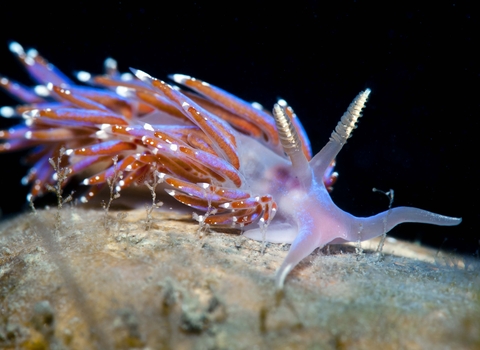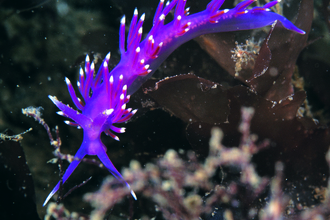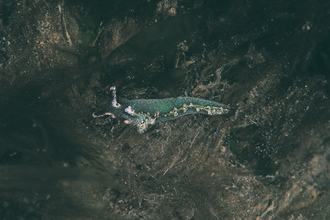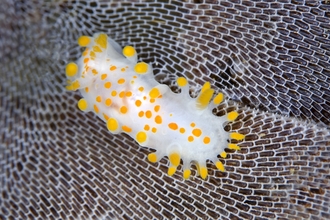What is a nudibranch?
Nudibranchs, also known as sea slugs, are much like their land-based relatives that you may spot in your garden. But, unlike your regular garden slug, the nudibranch can incorporate the stinging cells from their prey into their own bodies – giving them a defence against predators!
Nudibranchs are soft-bodied marine molluscs that lack external shells. They're also hermaphrodites, which means they have both male and female reproductive organs.
There are more than 100 species in UK seas, where they feed on seaweeds, sea mats, sponges, anemones and other nudibranchs. They are often brightly coloured – with some resembling a fireworks display!

Vibrant Nudibranch ©Dan Bolt
Where to find nudibranchs
Nudibrancs can be found in coastal and marine habitats across the UK and all year round. They vary in size from a few millimetres to several centimetres in length - the largest British species has been recorded at 20cm.
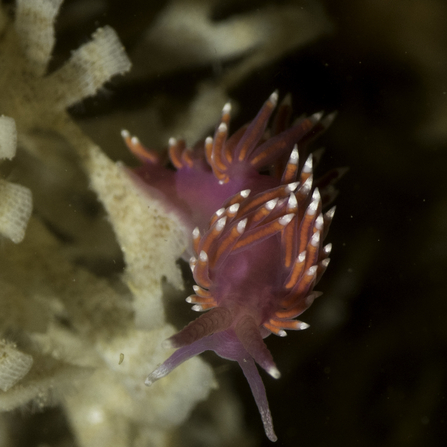
Nudibranch © Julie Hatcher
How to identify
Nudibranchs come in many colours and forms, often with two horn-like tentacles or feathery gills.
The image gallery below shows some of the incredible nudibranches that can be found in UK seas!
How can people help?
When rockpooling, be careful to leave everything as you found it - replace any rocks you turn over, put back any crabs or fish and ensure not to scrape anything off its rocky home. If you want to learn more about our rockpool life, Wildlife Trusts around the UK run rockpool safaris and offer Shoresearch training - teaching you to survey your local rocky shore. The data collected is then used to protect our coasts and seas through better management or through the designation of Marine Protected Areas. The Wildlife Trusts are working with sea users, scientists, politicians and local people towards a vision of 'Living Seas', where marine wildlife thrives. Do your bit for our Living Seas by supporting your local Wildlife Trust or checking out our Action Pages.

